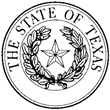
TEXAS ETHICS COMMISSION

 |
TEXAS ETHICS COMMISSION |
 |
August 21, 2007
Whether section 255.003 of the Election Code prohibits the spending of city funds for a city council member’s newsletter. (AOR – 539)
The Texas Ethics Commission has been asked to consider whether a city council member’s newsletter is political advertising that may not be paid for with public funds.1
Section 255.003 of the Election Code provides as follows:
(a) An officer or employee of a political subdivision may not spend or authorize the spending of public funds for political advertising.
(b) This section does not apply to a communication that factually describes the purposes of a measure if the communication does not advocate passage or defeat of the measure.
(c) A person who violates this section commits an offense. An offense under this section is a Class A misdemeanor.
Political advertising is defined by section 251.001(16) of the Election Code as follows:
“Political advertising” means a communication supporting or opposing a candidate for nomination or election to a public office or office of a political party, a political party, a public officer, or a measure that:
(A) in return for consideration, is published in a newspaper, magazine, or other periodical or is broadcast by radio or television; or
(B) appears:
(i) in a pamphlet, circular, flier, billboard or other sign, bumper sticker, or similar form of written communication; or
(ii) on an Internet website.
The critical issue in determining whether an advertisement is “political advertising” is whether it is a communication supporting or opposing a candidate or a public officer. Ethics Advisory Opinion No. 102 (1992). Whether a particular communication supports or opposes a candidate or a public officer is a fact question.
In a previous opinion, we considered whether a brochure that merely describes the duties of a justice of the peace court constituted political advertising. Ethics Advisory Opinion No. 211 (1994). In that instance, the name of the incumbent justice of the peace appeared only on the letterhead and was not done in an unduly conspicuous way or in a way that would lead one to believe that the purpose of the brochure was to support the incumbent, nor were there any facts that led us to believe the distribution of the brochure was campaign related. On those bases, we determined that the brochure was not political advertising as defined by section 251.001(16) of the Election Code.
A factor in determining whether a particular communication supports or opposes a public officer is whether the communication provides information and discussion of official activities without promotion of the public officer. The mere fact that the name of a public officer or the picture of a public officer appears in a newsletter would not determine whether the communication constitutes political advertising. However, the context and frequency with which the name or picture appears are relevant to making that determination.
The newsletter at issue consists of four pages. It includes one individual picture of a public officer and 22 other pictures in which the public officer appears with other persons. The area covered by the pictures is almost 50 percent of the newsletter. Additionally, the name of the public officer appears 22 times in print type that is bolded or larger than the main text. In our opinion, the newsletter is a self-promotion of the public officer and thus, when viewed as a whole, constitutes support of a public officer for purposes of “political advertising” as defined in section 251.001(16) of the Election Code. Consequently, public funds may not be used to pay for the newsletter.
We stress that whether a particular communication supports or opposes a candidate or a public officer is a fact question that can be answered only when the communication is viewed as a whole. However, a public officer’s newsletter that excessively uses pictures in which the public officer appears will almost always be political advertising. In our opinion, a public officer’s newsletter that contains no more than two pictures of the public officer per page is not excessive use if the total amount of area covered by the pictures is no more than 20 percent of any page on which the pictures appear. Additionally, we caution on the use of personally phrased references, such as the use of the public officer’s name, in particular when those references are set apart from other text.
The attached newsletter is “political advertising” as defined in section 251.001(16) of the Election Code, and therefore public funds may not be used to pay for the newsletter.
1 A copy of the newsletter is attached to this opinion as an appendix.